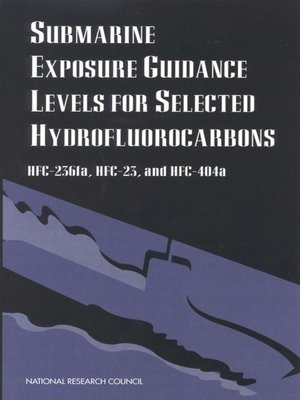Submarine Exposure Guidance Levels for Selected Hydrofluorocarbons
ebook ∣ HFC-236fa, HFC-23,and HFC-404a
By National Research Council

Sign up to save your library
With an OverDrive account, you can save your favorite libraries for at-a-glance information about availability. Find out more about OverDrive accounts.
Find this title in Libby, the library reading app by OverDrive.



Search for a digital library with this title
Title found at these libraries:
| Loading... |
<p>As part of the effort to phase out the use of stratospheric ozone-depleting substances, such as chlorofluorocarbons (CFCs), the U.S. Navy is considering hydrofluorocarbons (HFCs) as replacements for the CFC refrigerants used aboard its submarines. Before using the HFCs, the Navy plans to set emergency exposure guidance levels (EEGLs) and continuous exposure guidance levels (CEGLs) to protect submariners from health effects that could occur as a result of accidental releases or slow leaks.</p>
<p>In this report, the Subcommittee on Exposure Guidance Levels for Selected Hydrofluorocarbons of the National Research Council's (NRC 's) Committee on Toxicology independently reviews the scientific validity of the Navy's proposed 1-hr and 24-hr EEGLs and 90-day CEGLs for two of the candidate refrigerants-HFC-236fa and HFC-404a. In addition, the subcommittee reviews the the EEGLs and CEGL for HFC-23, one of the combustion products of HFC-236fa. This NRC report is intended to aid the Navy in using HFCs safely.</p>






